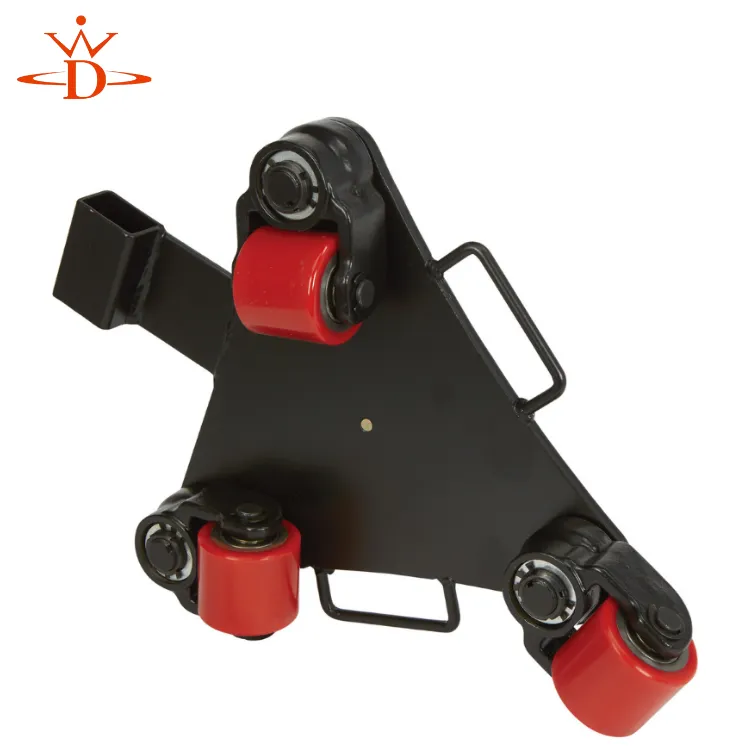Gantry Systems for Efficient Lifting and Material Handling Applications
Understanding Gantry Lifting Equipment A Comprehensive Overview
Gantry lifting equipment plays a crucial role in various industrial and construction applications, providing a practical solution for moving heavy loads with efficiency and safety. This article delves into the fundamentals of gantry lifting systems, their advantages, types, and applications.
What is Gantry Lifting Equipment?
Gantry lifting equipment typically consists of a framework that supports a hoist or trolley. This structure resembles a bridge, allowing it to move loads vertically and horizontally. The primary components of a gantry system include vertical support legs, a horizontal beam, and a lifting mechanism (usually a hoist or winch). Depending on design and purpose, a gantry crane can be permanently fixed or portable, allowing for versatile usage in various contexts.
Advantages of Gantry Lifting Equipment
1. Flexibility One of the standout features of gantry systems is their flexibility. They can be moved easily to different locations, allowing for the lifting of loads across various work areas without the need for permanent installation. This makes them ideal for dynamic work environments such as warehouses, factories, and construction sites.
2. Cost-Effective Compared to traditional overhead cranes and other lifting systems, gantry cranes can be more cost-effective. They require less installation infrastructure and can often be assembled and disassembled without specialized tools. This reduces initial costs and ongoing maintenance expenses.
3. Customizable Gantry systems can be tailored to fit specific load requirements and workspace constraints. Users can choose from different heights, spans, and lifting capacities to ensure that the gantry crane meets their operational needs.
4. Safety When used correctly, gantry cranes enhance workplace safety by reducing the risk of manual handling injuries. They provide a secure method for lifting and moving loads, minimizing the likelihood of accidents.
Types of Gantry Lifting Equipment
Gantry lifting equipment can be classified into several types based on their design and functionality
1. Fixed Gantry Cranes These cranes are permanently installed on a designated worksite and are not meant for relocation. They are often used in manufacturing and assembly operations where heavy loads need to be moved efficiently across a specific area.
gantry lifting equipment

2. Portable Gantry Cranes Designed for versatility, portable gantry cranes can be moved from one location to another. They are typically smaller and lighter, making them suitable for jobs that require flexibility and mobility, such as maintenance and repair work.
3. Adjustable Height Gantry Cranes These cranes allow users to modify the height of the lifting beam to accommodate various load sizes and lifting tasks. This feature is particularly useful in environments where the height of loads and obstacles varies frequently.
Applications of Gantry Lifting Equipment
Gantry lifting equipment is utilized in various sectors, including
- Manufacturing Used for assembling machinery, transporting parts, and lifting heavy components during the production process.
- Construction Essential for moving heavy construction materials, steel beams, and equipment on site, improving overall workflow efficiency.
- Warehousing Ideal for loading and unloading items, managing inventory, and facilitating the relocation of heavy goods within warehouses.
- Maintenance Commonly employed in repair shops and maintenance facilities for lifting heavy machinery or vehicle components for service.
Conclusion
Gantry lifting equipment is an essential part of modern industry, providing a reliable and cost-effective solution for moving heavy loads. Its flexibility, safety features, and customizable designs make it an attractive option for businesses across various sectors. With advancements in technology and materials, the future of gantry cranes looks promising, paving the way for even greater efficiency and innovation in lifting solutions. Whether in manufacturing, construction, or maintenance, gantry lifting equipment remains a vital tool that enhances productivity and safety in the workplace.
-
Unlock Seamless Relocation with Our Heavy Equipment Moving ExpertiseNewsJun.06,2025
-
Unleash Unrivaled Flexibility with Our Adjustable Gantry CraneNewsJun.06,2025
-
Unleash Heavy-Duty Efficiency with Our Industrial Gantry Crane SolutionsNewsJun.06,2025
-
Revolutionize Steel Handling with Our Magnetic Lifter RangeNewsJun.06,2025
-
Master Equipment Mobility with Premium Machinery Mover SolutionsNewsJun.06,2025
-
Elevate Your Material Handling with Magnetic Lifter TechnologyNewsJun.06,2025
-
YS Permanent Lifting Magnets: The Smarter Way to Handle SteelNewsMay.22,2025
